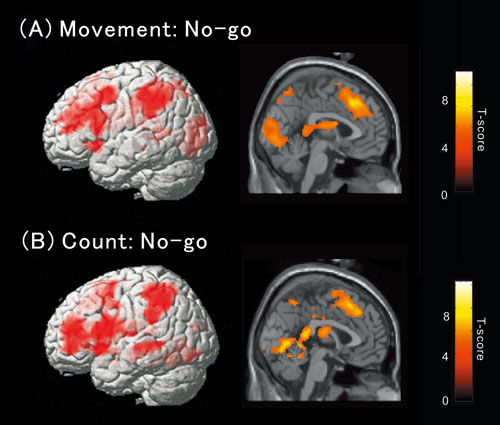Nakata H, Sakamoto K, Ferretti A, Perrucci GM, Del Gratta C, Kakigi R, Romani GL. Somato-motor inhibitory processing in humans: An event-related functional MRI study. NeuroImage, 2008, 39: 1858-1866.
Inhibiting inappropriate behavior and thoughts is an essential ability for humans, but the regions responsible for inhibitory processing are a matter of continuous debate. This is the first study of somatosensory go/no-go tasks using event-related functional magnetic resonance imaging (fMRI). The subjects preformed two different types of go/no-go task, (1) Movement and (2) Count. Go and no-go stimuli were presented with an even probability. Our data indicated that the response inhibition network involved the dorsolateral (DLPFC) and ventrolateral (VLPFC) prefrontal cortices, pre-supplementary motor area (pre-SMA), anterior cingulate cortex (ACC), inferior parietal lobule (IPL), Insula, and temporoparietal junction (TPJ). These activities existed in both Movement and Count No-go trials. Therefore, our results suggest that the neural network for inhibitory processing involves common regions, not depending on the required response mode.
(A) (B) Group activation map showing activated brain regions in Movement No-go and Count No-go trials.
Areas showing an increase in BOLD-signal are superimposed on a 3D-rendered standard brain (left panel) and sagital image (right panel).
